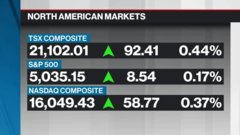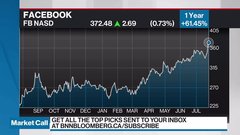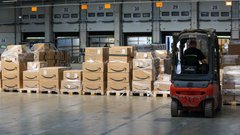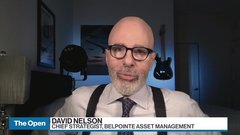Feb 1, 2019
Amazon shares drop on concerns of rising costs, India growth
, Bloomberg News
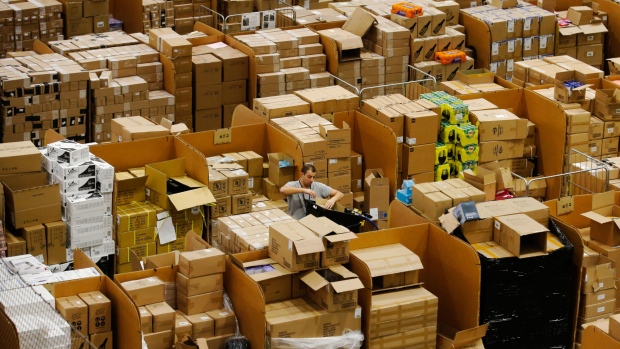
Amazon.com Inc. (AMZN.O) shares dropped after the e-commerce giant gave a tepid first-quarter sales forecast and raised concerns about rising costs, slowing retail growth and a murky outlook for its business in India.
Sales will be US$56 billion to US$60 billion in the current period, the company said Thursday, compared with analysts’ average estimate of US$61 billion. Though fourth-quarter sales and earnings topped analysts’ estimates, growth in the North American retail unit slowed dramatically in the key holiday period, and comments about uncertainty in India sent the stock lower. Shares declined as much as 5.8 per cent in extended trading.
Finance chief Brian Olsavsky tried to reassure investors that the company remains on the right track. But he had few encouraging words about growth in India, saying the effects of new e-commerce regulations in the country are still uncertain. Chief Executive Officer Jeff Bezos has pledged about US$5 billion to chase growth in India, seeing the world’s second-most populous country as the best frontier for Amazon’s international push. But its grand plans were thrown into chaos after the country implemented new e-commerce regulations, which some analysts believe could cut its growth in the market by as much as half this year.
“That’s wildly concerning,” said Tom Forte, an analyst at DA Davidson & Co. “Think about how damaging it will be to Amazon’s future if India isn’t a big part of it. Up until now, China has been its biggest failure.”
In the fourth quarter, overall losses from international operations widened to US$642 million, reversing a trend of improving profitability. On a call with reporters, Olsavsky also said headwinds from foreign currency exchange rates are curbing revenue.
ERLICHMAN: Amazon outpaces rivals in joining elite US$200B sales club
Worldwide shipping costs increased 23 percent in the fourth quarter, outpacing online sales growth and highlighting the strain of free shipping promotions Amazon launched to fend off competition from Walmart Inc. and Target Corp. over the holidays. Amazon also saw a big deceleration in subscription-services revenue, which is mostly Prime membership fees. More than 100 million Prime members worldwide pay monthly or yearly fees in exchange for shipping discounts and music and video streaming. Amazon increased the price of Prime last year, and free two-day shipping has become a common offering from other retailers.
The company forecast first-quarter operating income of US$2.3 billion to US$3.3 billion, in line with projections for $2.99 billion. Olsavsky also hinted that Amazon’s spending will increase in 2019, emphasizing that expenditures in 2018 were light and the company has to keep investing in people and facilities to expand.
In the fourth quarter, Amazon’s biggest of the year, revenue rose 20 per cent to US$72.4 billion. Analysts projected US$71.9 billion. Net income was US$6.04 per share, compared with an average estimate of US$5.56. Sales at Amazon Web Services, the top seller of cloud-computing services, climbed 45 per cent to US$7.43 billion, maintaining the pace of the previous period. Operating expenses grew 18 per cent in the recent quarter, according to the company’s statement.
Advertising was a key moneymaker, highlighting Amazon’s ability to charge brands and merchants for visibility to its 100 million-plus loyal Prime subscribers, who pay fees in exchange for delivery discounts, movie and music streaming and other perks. The company’s "other" revenue category, which is mostly advertising, grew 95 per cent to US$3.39 billion in the quarter.
Shoppers will spend US$484 billion globally on Amazon this year, up 26 percent from 2018, and the Seattle-based company will capture more than half of all online spending in the U.S., according to EMarketer Inc. Bezos has been pushing beyond the low-margin business of selling goods online into more profitable categories like cloud computing and advertising. Those profits also help fuel Amazon’s growing devices business, which includes smart-home and connected-car gadgets that operate on Amazon’s voice-activated Alexa platform.
Investor faith in Amazon’s growing profits helped push the stock to a record high in September, before the shares dipped during a broader market slump at year’s end. Amazon shares are up about 14 per cent this year on investor optimism that the company can maintain growth and profitability, and closed at US$1,718.73 before the results were released. Amazon had jumped back above Microsoft Corp., which is No. 2 in cloud computing, as the most valuable publicly traded company, with a market capitalization of US$840.4 billion.
Still, a tight labour market, rising shipping costs and money-losing investments abroad remain threats. Amazon in October pledged to pay all of its warehouse employees at least US$15 an hour, while eliminating some bonuses and stock awards. The cost of stowing, packing and delivering goods increased 12 per cent in the holiday quarter to US$10 billion, in line with online sales growth of 12.5 per cent.
The fourth quarter offered investors the first glimpse of year-over-year results since Amazon’s US$13.7 billion acquisition of Whole Foods Market in 2017. Sales in physical stores, which are predominantly Whole Foods locations, decreased 2.7 per cent to US$4.4 billion. In-store pickups of online grocery orders don’t count as physical store sales, further clouding the ability to track the performance of Amazon’s grocery push. The online retailer’s brick-and-mortar strategy also includes bookstores and a cashierless convenience store called AmazonGo, which lets customers check in with a smartphone app and be charged automatically based on what they remove from the store.
Amazon has historically delivered relatively little profit as it fulfills Bezos’s strategy of investing to stay ahead. Building warehouses and data centers around the world, inventing new devices and automating tasks usually done by humans are just some of the places Amazon spends its money.
Bezos, the world’s wealthiest man and Amazon’s biggest shareholder, announced earlier this month that he was divorcing MacKenzie, his wife of 25 years.



